|
Lesson 3
Spotted Tail and Mary Collins
|
| |
|
In 1877, the Great Sioux Reservation stretched for
many miles. It went west from the Missouri River almost all the way
to the Black Hills. But the Lakotasí nomadic way of life was over.
No longer could they hunt buffalo. Instead, their food and clothing
came from the United States government. It was payment for the land
the Lakotas had given up. Government agents played a large role in
the peopleís lives. Agents urged them to send their children to
school. They told them to take up farming.
|
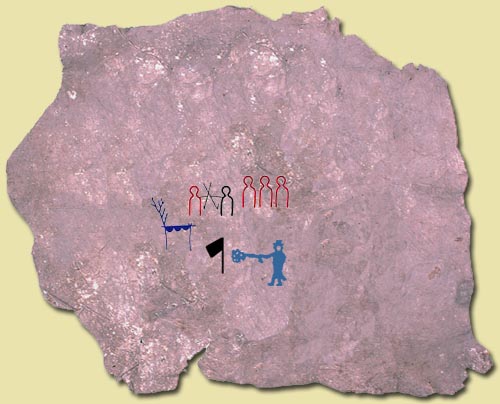
Winter Count
|
|
|
|
Spotted Tail and the Sicangu Lakotas
|
|
Spotted Tail was a Brulť (Sicangu) Lakota. As a strong voice
for his people, he led them in their dealings with the United
States. He was born in about 1823 near the White River. He earned
honor among his people as a warrior. He fought other tribes and
United States soldiers. He spent time in prison in Kansas for
killing soldiers.
There he saw the size of the United States Army. He saw that the
Lakotas would have to stay friends with the white people. They would
have to give up their old life or die. Spotted Tail was one of the
leaders who signed the Fort Laramie Treaty of 1868. His people
settled on the reservation. He sent his children to boarding
school so that they could learn English. He worked with his
agent to get the best for his people.
|
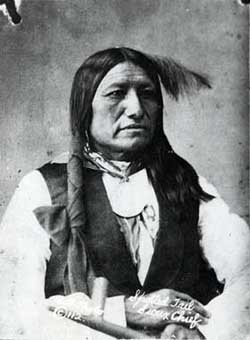
Photo courtesy of South Dakota State
Historical Society
|
|
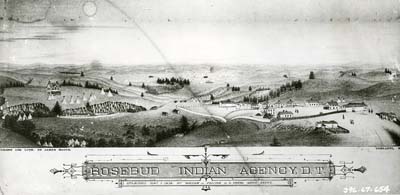
Photo courtesy of South Dakota State
Historical Society
|
When gold seekers came to the Black Hills, Spotted
Tail visited the mines. He saw that the hills were of great value.
He urged the Lakotas not to sell them. Even so, he kept his people
at their
agency during the fighting in Montana. Spotted Tail
was one of the leaders who signed the agreement with the government.
He gave up the Black Hills so that his people could eat. Spotted
Tail settled with the Sicangus on what would become the Rosebud
Indian Reservation. He remained a powerful leader until his
death in 1881.
|
|
|
|
Mary Collins and Sitting Bull
|
Christian missionaries now came to the reservation.
President Ulysses S. Grant asked them to teach the Indians a new way
of life. The missionaries taught about the Christian religion. They
taught reading and writing. Some missionaries taught in both Lakota and English. They taught
farming and home building. They were not always welcome.
Missionaries had to win the trust of the people.
|
|
Mary C. Collins came to work among the Lakotas. She left thirty-five
years later as a friend. She was born in Illinois in 1846. She
taught school in Iowa for a few years. Then she came to work at the Oahe
Mission on the Missouri River. Later Collins moved to the Standing
Rock Indian Reservation. She lived among Sitting Bullís band.
Collins learned the Lakota language. She and Sitting Bull were
friends. They valued each otherís
opinions.
|
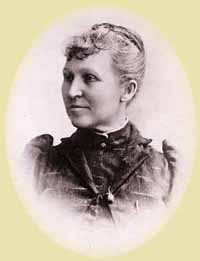
Photo courtesy of South Dakota State
Historical Society
|
|
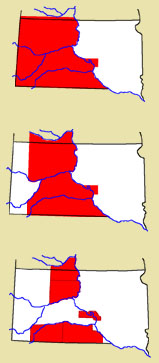
Reservations
|
These were desperate times for the Lakotas. New laws and treaties
broke up the Great Sioux Reservation. First Congress
allotted
land to the Lakotas. Each adult got 160 acres. This was the same
size of farm that settlers got as a homestead. Three-quarters of the
adult men signed a paper agreeing to sell the rest of their lands. This is called the
Sioux Agreement of 1889. Then Congress made six smaller
reservations. All land not allotted to Lakotas was opened to
settlers the next year. The Lakotas were not happy about this. The
government was behind in payments of food and supplies. People were
hungry. Missionaries like Mary Collins did what they could to help.
Then a new religion spread among the people.
|
|
The Ghost Dance religion promised that the settlers would
disappear; the buffalo would come back to feed the people. Many
Lakotas came together to dance so that this might come to pass. Fear
spread among the settlers. The new religion looked like the start of
a new war. The United States Army was afraid that Sitting Bull would
be the leader. Mary Collins asked Sitting Bull to stop the dancing.
She feared that many Indians would be killed. Her advice was too
late. United States soldiers and Indian policemen came to arrest
Sitting Bull. There was a fight, and Sitting Bull was killed. Some
Lakotas fled south to the Badlands. The army stopped one group at Wounded
Knee Creek. Over 150 Lakota men, women, and children were
killed. About thirty soldiers died. For the Lakotas, it was the end
of all hope for the old style of life.
|
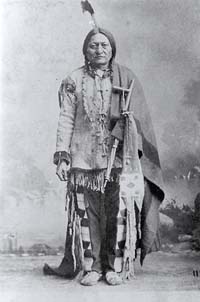
Sitting Bull
|
|
|
Mary Collins stayed with the Lakotas. She tried to help them adapt
to the reservation. She fought to get them more money for their
lands. She moved back to Iowa when she retired. Even there, she
worked to make friends for the Indians. She died in 1920.
|
| Vocabulary |
|
| agency (n.), a government
office that gives rules on the reservation
allotted (v.), divided and given out as lots
|
opinions (n.), beliefs or thoughts
|
|